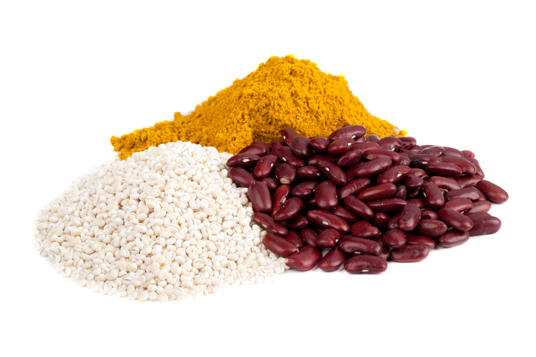Ayurveda involves balancing nutrition with overall lifestyle. This is the basis for health. There is no such thing as suppressing symptoms, but rather, curing the cause of the disease. By eliminating imbalances in the principles quality of health is achieved.
In addition, Ayurveda views medication as secondary to nutrition and lifestyle.
Ayurveda acknowledges that re-balancing an individuals constitution may take longer than merely popping a pill, but works out better as it is permanent and will eliminate other symptoms or un-related diseases.
Ayurvedic nutrition is based on 5000 years of pure observation in the surrounding environment, whilst biochemical premises are based on lab tests, where original material is taken out of natural habitats.
Thus it can be stated that the Ayurvedic approach is definitely based on ‘experience’ whereas the biomedical approach is based on a specified ‘structure system’.
Tri-dosha theory forms the backbone of Ayurveda. It is a method of adjusting our diet based on the fact that we are all unique and have different metabolisms and responses to food.
Tri-dosha theory states that our universe consists of 5 states of matter known as ‘Pancha Mahabhutani’.
These states of matter are controlled by principles otherwise known as ‘doshas’, “everything that exists in the external universe has its counterpart in the internal universe of the human body.” (Svoboda, 2002, p. 25)
There are three major doshas that are known in Ayurveda they are Vata, Pitta, and Kapha. Vata can be described as air, pitta as fire and kapha as water. This is further enhanced by the notion that some authors describe them as “catabolic, metabolic, and anabolic”.
(Svoboda, 2002) Vata is represented by movement, Pitta is represented by burning which is associated with bio-transformation, and kapha is represented by cohesion.
Firstly, tri-dosha theory determines the dosha that is dominant in the individual’s metabolism. Thereafter, a food plan is prepared for the individual.
It is very important to understand that the three doshas are constantly interacting with one another, so even though all individuals contain all of these principles within them, some may be more dominant than others.
Seeing as every individual has a unique combination of the three doshas, the major goal is to achieve balance. Balance, according to Ayurveda means health.
Tri-dosha explains that our constitution is fixed at the point of fertilization (conception), when the sperm and egg meet. The time of day and season also contribute in determining our individual constitution.
With regards to free-will, tri-dosha states that we should work with and not against our constitution to encourage balance and optimal health; however we still have a choice.
All types are considered equal in the tri-dosha theory, we as individuals, have the choice to make it a positive or negative experience. Individuals have the choice to either emphasize the positive traits in their constitution or de-emphasize them.
In a psychological perspective we usually utilize all three traits for different situations, so it is really up to the individual to take control of their own life and ‘go with the flow’ so to speak.
You can find much more information on living a holistic lifestyle in these free magazines and on our YouTube channel.
Lakshmi Harilela – www.lovetruefood.com






